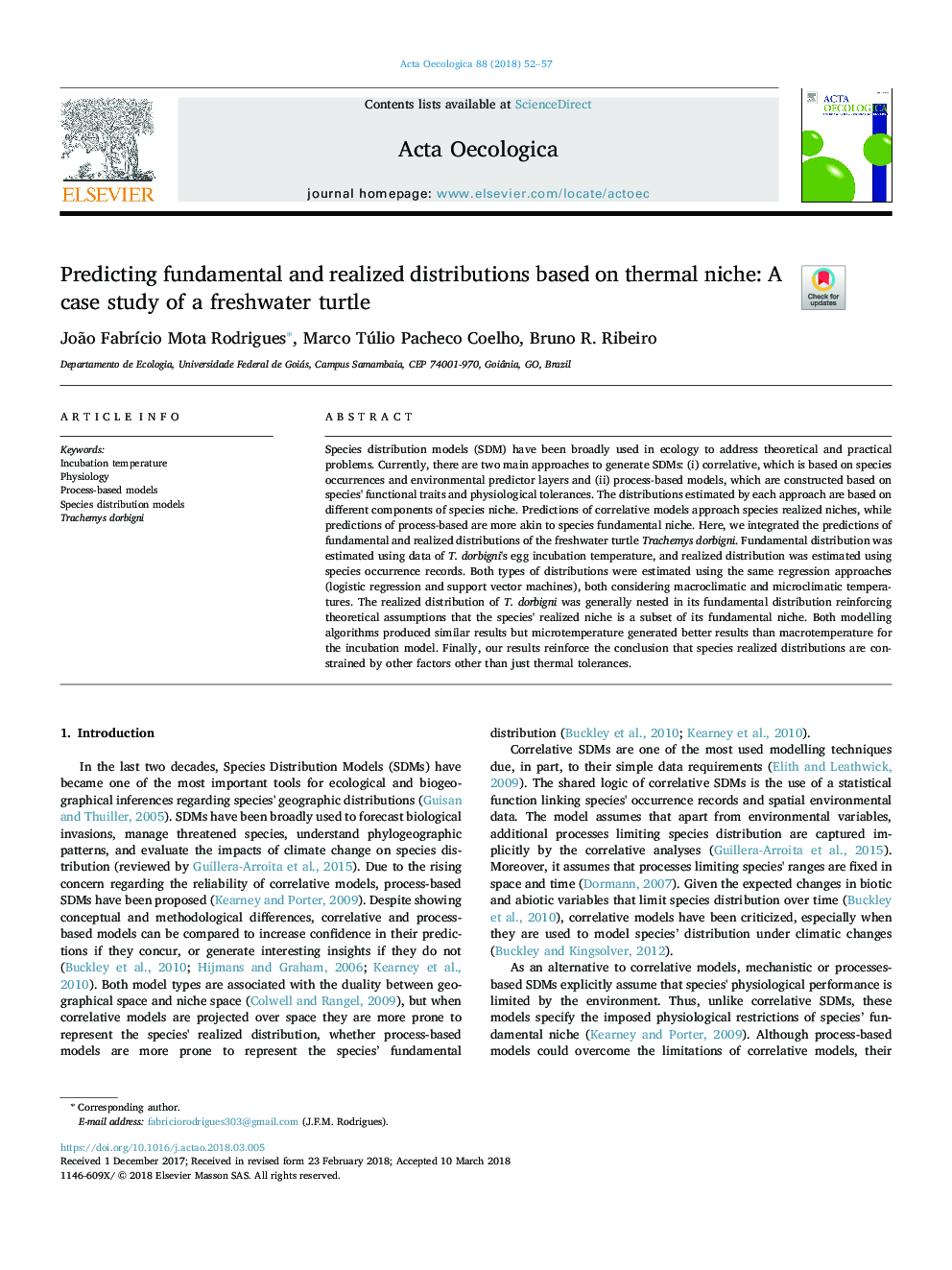| Article ID | Journal | Published Year | Pages | File Type |
|---|---|---|---|---|
| 8846513 | Acta Oecologica | 2018 | 6 Pages |
Abstract
Species distribution models (SDM) have been broadly used in ecology to address theoretical and practical problems. Currently, there are two main approaches to generate SDMs: (i) correlative, which is based on species occurrences and environmental predictor layers and (ii) process-based models, which are constructed based on species' functional traits and physiological tolerances. The distributions estimated by each approach are based on different components of species niche. Predictions of correlative models approach species realized niches, while predictions of process-based are more akin to species fundamental niche. Here, we integrated the predictions of fundamental and realized distributions of the freshwater turtle Trachemys dorbigni. Fundamental distribution was estimated using data of T. dorbigni's egg incubation temperature, and realized distribution was estimated using species occurrence records. Both types of distributions were estimated using the same regression approaches (logistic regression and support vector machines), both considering macroclimatic and microclimatic temperatures. The realized distribution of T. dorbigni was generally nested in its fundamental distribution reinforcing theoretical assumptions that the species' realized niche is a subset of its fundamental niche. Both modelling algorithms produced similar results but microtemperature generated better results than macrotemperature for the incubation model. Finally, our results reinforce the conclusion that species realized distributions are constrained by other factors other than just thermal tolerances.
Related Topics
Life Sciences
Agricultural and Biological Sciences
Ecology, Evolution, Behavior and Systematics
Authors
João FabrÃcio Mota Rodrigues, Marco Túlio Pacheco Coelho, Bruno R. Ribeiro,
